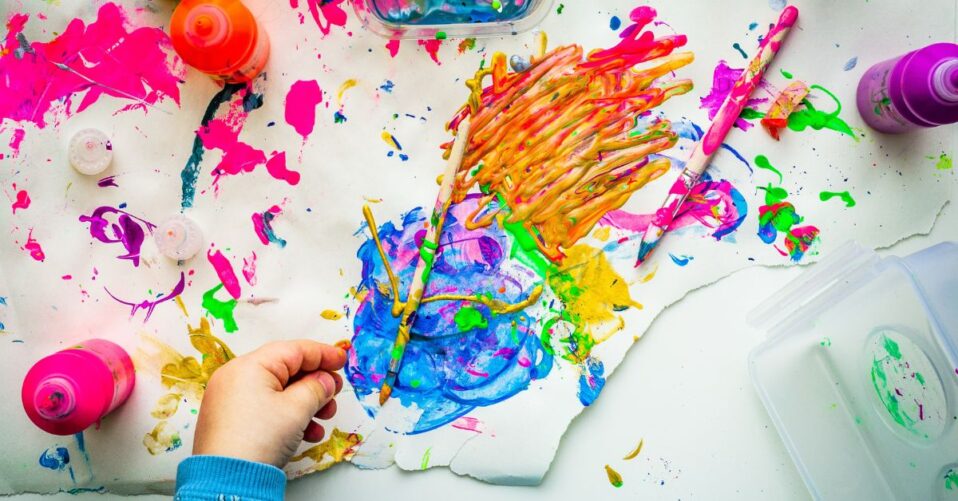By: Pete Court
You’re at work, say, or in a meeting of some form, and someone decides on a brainstorming session.
And this person knows that one of the best ways to get creativity flowing is to tell you to ‘Be Creative.’ Seriously, it can be that simple. But then they kill creativity by turning it into a problem-solving exercise. Schools do it too. And Kindies. The idea behind ‘problem solving creativity’ is that kids will learn how to become useful, impacting, little creative adults.
The problem is, creativity is not designed for solving problems. Sure, it can be helpful, but it’s not what it’s for. Like noses. We worry endlessly about what they look like, but they are mainly for helping us breathe and smell stuff. And this is the big awareness that is starting to emerge in the world of creativity research. Creativity isn’t a tool. It’s a toy. It’s a plaything, designed to be nothing but itself. The sheer power unleashed by just playing is enormous. It allows access to unique observations, it reduces stress, burns calories, increases positive moods, well-being, self-esteem and so much more. But using the creativity of play to do all this is like using a lightbulb to warm your hands. Yes, it works, but…
The But is This…
By turning Creativity into a tool, a process, or a medication, we miss the most important thing about it.
Creativity is for play. Pure, simple, untargeted play. Or, more precisely, creativity does all the good things we want it to do when we stop trying to use it as a tool and just muck-the-heck about. It is ironic that after all these years of parents trying to help their children grow into adults, the most powerful thing to be learned is that parents need to behave more like their kids.
Levitt and Dubner have made a huge name for themselves as the creators of ‘Freakonomics’, a way of looking at the world differently. They note that ‘When it comes to generating ideas and asking questions, it can be really fruitful to have the mentality of an eight-year-old.’ Why? Because children aren’t restrained by what they ‘should’ or ‘shouldn’t’ do, think, or imagine. They are not seeking to solve problems; they are seeking to… play. Just unleash the shackles of ‘ought to’ and let the playdough become whatever it becomes. Jenny Alexander is one of a swarm of writing coaches who has discovered this. Which is why she says, ‘all creative work begins with play.’
The Bluey Example
The highly successful and deeply loved TV show Bluey is another perfect example. It is all about play. The show is about the constant world-making and life-shaping wonder of kids at play. And it’s so engaging and real that parents and kids alike won’t miss an episode. But wait, this show is created by a mature adult, a man with a career and a company to run. A serious grown-up man. So how can he do it? Joe Brumm told the British Independent newspaper that ‘when it came time to write the show, I was spending a lot of time, early in the morning, playing with my kids… I learned more and more about play, and then… that became the bulk of the show – really just those sort of role playing, imaginative kinds of games that kids four to six play.’
“Sure”, you say, “that’s fine for creating a kids show, but how can creating a new type of engine, or a breakthrough energy source, have anything to do with childlike play?” Far more academic and grown up, is the work of John Hoorn who says that ‘The preparatory state to creative insight is free association, taking place uninhibited, unrestricted by control process.’ In other words, before you even think about problem solving, just play like a child. Not to find the solution, but just to play. That state of freewheeling, joyful, being is the perfect state for a mind that is going to robustly, efficiently and consistently come up with thoughts and imaginings that have never been found before.
There’s a bit more to it than just play, which is why I teach a full semester on it. But there’s not much more. Mostly it’s about how unique individuals can use this truth for themselves. Because the most creative avenue through most problems, for work, home, even personally, begins not with trying to identify, quantify or understand the problem. It comes from being a kid, playing like a child and finding joy in just being unrestrained and creative, for its own sake.
Or, to quote from the famous blue dog: ‘I drew a green balloon next to it to make me smile.’
Article supplied with thanks to 1079life.
Feature image: Photo by Dragos Gontariu on Unsplash




